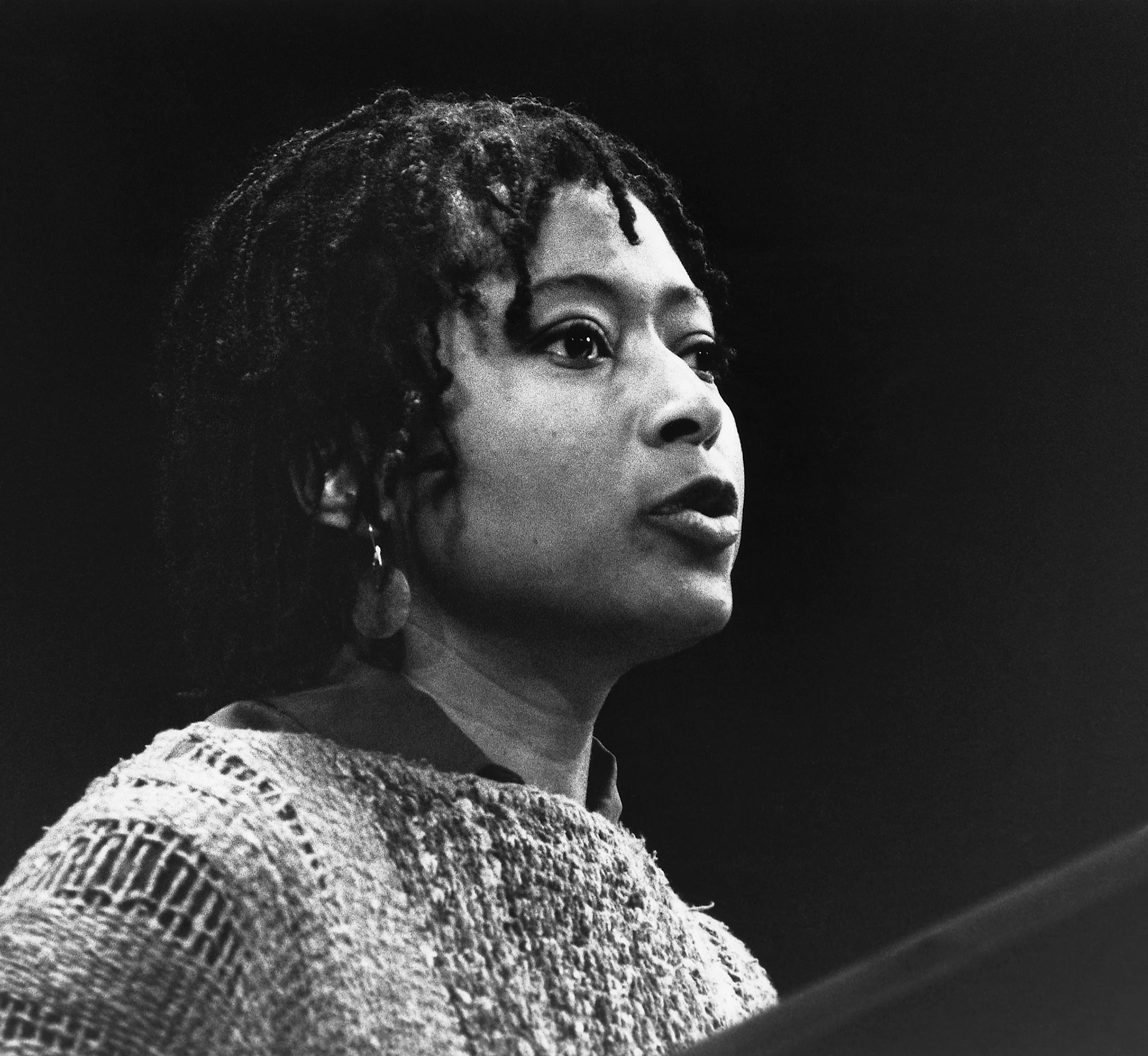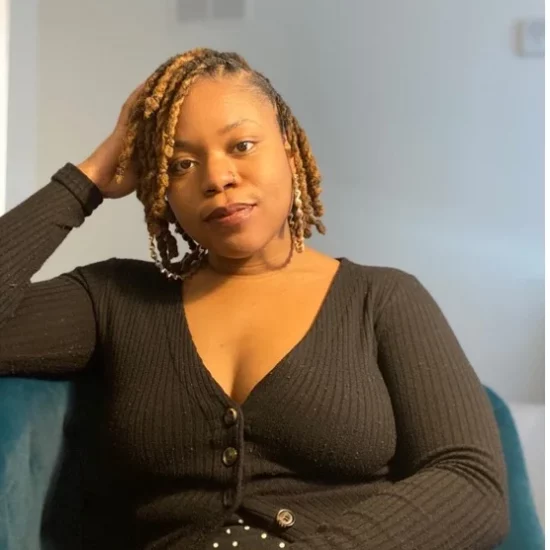Photo by Bettmann Collection/Getty Images
In 1978, Barbara Smith, a Black feminist writer and organizer, published her groundbreaking text, Toward a Black Feminist Criticism, which she ended by expressing her desire to read one book, just one book that could reflect the experiences of Black lesbians loving one another affirmatively.
This yearning exemplified the state of Black literature in the 1960s, up until the late 1970s. Black lesbian relationships, though a well-known presence within Black communities, were almost non-existent within Black literature.
Though Alice Walker’s The Color Purple (1982) was a silent presence in the literary world upon its publication, it represented a shift in what was possible in the realm of trade publishing for Black women’s literature. Not only did it become possible to publish a Black feminist protest novel, but the book marked a turning point in which a protest novel could be Black, feminine, and explicitly queer.
In this photograph, Walker stands tall. Her elegance and audaciousness pierce through as she reads letters from The Color Purple. It is October 1985, two months before Steven Spielberg’s movie adaptation of the book would be released. Walker’s gaze is tender yet fearless, commendable given the act of bravery writing her novel had required.
Alice Walker wrote The Color Purple when Black queer feminist organizing was gaining its footing.
By 1977, the Combahee River Collective, a Black lesbian socialist group from Boston, had already released its famous statement emphasizing the need for Black women to define their own political agendas. Other active Black feminist organizations like the National Alliance of Black Feminists, the Third World Women’s Alliance, and the National Black Feminist Organization helped create a socio-political environment where Black feminists had arrived.
Undeniably, by the 1970s the movement was here. But a longing for storytelling that reflected Black women’s lived experiences at the intersections of their Blackness, womanhood, and sexuality characterized its aspirations.
The Color Purple is a coming-of-age story about a Black woman named Celie who writes letters to God as she grapples with poverty, rape, and incest at the hands of her “Pa,” and then the violence of her husband “Mr. ___.” The story follows Celie as she leans on her relationships with other Black women—Nettie, Shug, and Sofia.
Celie’s relationships with these women, romantic and platonic, provide her with a model of what it looks like to operate as if you were already free. By the end of the novel, Celie no longer writes letters to God, and instead finds respite in knowing that nothing but the relationships that enable our capacity for rebellion can save us.

By 1983, the book had met critical acclaim, winning a Pulitzer Prize and a National Book Award. However, it was not until the release of Spielberg’s 1985 movie that Walker faced backlash from many Black male critics.
These Black male critics argued that the film—and by extension the book, Walker, and all Black women—had allied with the white-male establishment to depict Black men as rapists and savages. Some even went as far as to compared the representations of Black men in The Color Purple to those in D.W. Griffith’s 1915 film, The Birth of a Nation.
The backlash Walker faced was typical of reactionary responses to Black women writers whenever they dared to write about the realities of intracommunal violence and their refusal against it. Before The Color Purple, works from other Black women like Ntozake Shange’s For Colored Girls (1976) and Michele Wallace’s Black Macho and the Myth of Superwoman (1979) received similar forms of criticism.
The backlash also represented the suspicion and misconception that some Black people had about Black feminism. Many believed that Black feminists were race traitors, man-hating, and lesbians. The film reified all those fears, despite the ways the book had sought to hold onto the complexities of Black social life and the relations that constitute it.
Despite the controversy, we remember The Color Purple because of Black feminists’ willingness to bear witness to the truth behind Walker’s work. The Black feminist movement created a space for the emergence of Walker’s book, and in turn, The Color Purple created an opening for a lineage of other Black women writers like Octavia Butler, Gloria Naylor, and Audre Lorde.
This act of generosity in writing The Color Purple forever revolutionized Black women’s literature. No longer are we desperately searching for one another. We have arrived, and we are here to stay.

Learn more:
Bobo, J. (1995). Black women as cultural readers. Columbia University Press.
Walker, A., & Boyd, V. (2022). Gathering blossoms under fire – The Journals of Alice Walker. Orion Publishing Group.
Walker, A. (2022). The Color Purple. Penguin Books.





